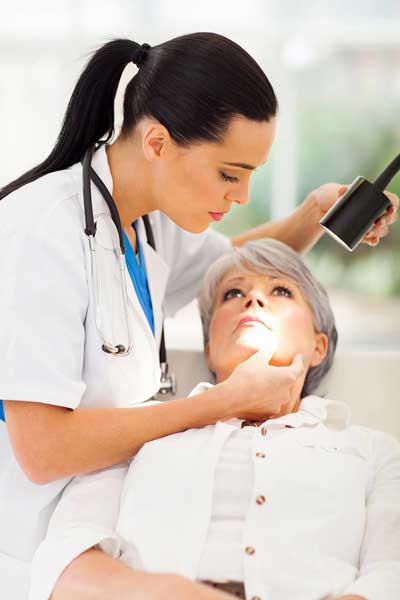Recognizing the Risk Factors for Rosacea

Rosacea is a troublesome skin disease. It causes noticeable redness and flushing on the facial skin. There are a few different types of rosacea. Some people may notice visible blood vessels, thick and bumpy skin, irritated eyes, and breakouts similar to acne. If you suspect you might have rosacea, you shouldn’t delay seeing a dermatologist. When it’s left untreated, rosacea often gets worse. At the dermatology clinic, you’ll be asked about your symptoms and your medical history.
Family History
Your family history can be influential in your own personal health history. If someone in your family has been diagnosed with rosacea, you may be more likely to get it too. However, it’s not inevitable, since having a family history of a particular disease isn’t the same as inheriting a genetic disease. Scientists don’t yet know exactly what causes rosacea, but it may be a combination of family history and environmental factors.
Age
It’s possible to develop rosacea earlier in life, but most people who are diagnosed with it are at least 30 years old. And if you’re going to get it, rosacea will typically develop before age 50.
Sex
Another uncontrollable risk factor of rosacea is a person’s sex. Women are far more likely to develop this skin disease than men. It isn’t known exactly why this occurs, nor is it known why rosacea seems to affect men and women differently. Men with rosacea are more likely to develop complications of the nose, such as noticeable swelling and redness. Women are more likely to get facial redness or bumps on the cheeks and chin.
Skin Type
Rosacea can affect anyone, but it’s much more common among people with fair skin. The redness and flushing might also be more noticeable on fair skin. People with rosacea are more likely to have ethnic backgrounds that are traditionally associated with fair skin, such as Irish, English, Scandinavian, and Scottish ancestry.
At Swinyer-Woseth Dermatology, you’ll find state-of-the-art treatments for skin problems like rosacea. Our dermatology team in Salt Lake City often recommends IPL photorejuvenation therapy for our patients with rosacea. Call 801-266-8841 to request our next available appointment.
